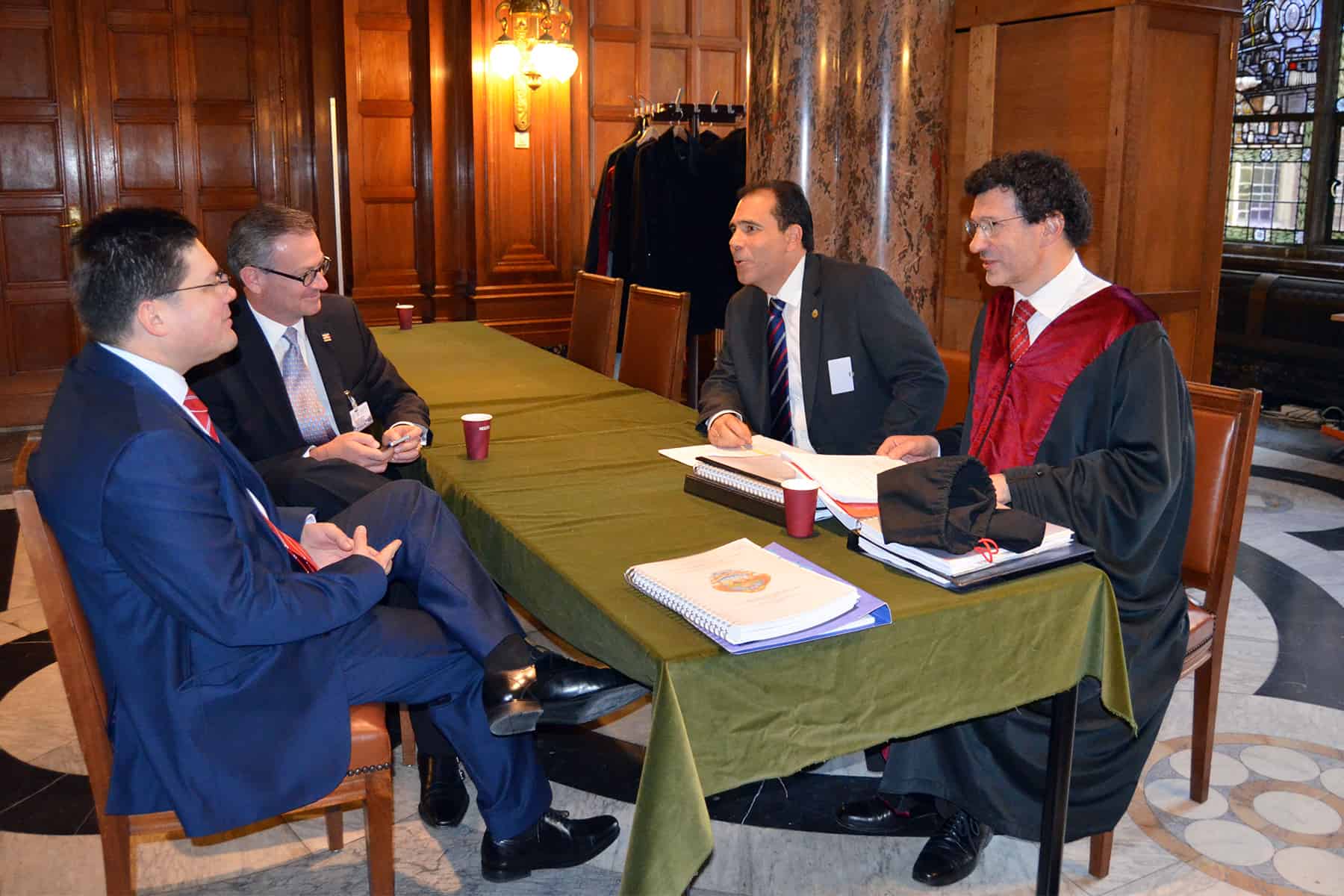Costa Rica’s legal team on Wednesday wrapped up a first stage of hearings at The Hague-based International Court of Justice with closing arguments in a case against Nicaragua for the alleged invasion of three square kilometers of wetlands during dredging operations in the border area.
Costa Rica on Tuesday also began highlighting evidence of alleged infringements by Nicaragua of provisional measures ordered by the world court in March 2011. At the time, justices ordered both countries to stay clear of the area pending a final ruling.
See related: Costa Rica, Nicaragua enter final hearings at The Hague in border dispute
Costa Rica said Nicaraguan nationals had repeatedly entered the disputed area, known by Costa Ricans as Isla Portillos and by Nicaraguans as Harbor Head.
Attorney Kate Parlett said Nicaragua had maintained a continuous military presence in the disputed territory despite the court’s orders, and that members of Nicaragua’s Sandinista Youth Movement also had camped on Isla Portillos with Managua’s and President Daniel Ortega’s blessing.
Costa Rica added that Nicaragua had built three artificial canals in 2010 and 2013 to connect the Río San Juan – a natural border between the two countries – to the Caribbean Sea in order to change the geography of the area and claim that territory as its own.
Justices heard testimony in favor of Costa Rica from experts who had conducted scientific studies included as evidence in the case.
Following the hearing, Nicaragua’s ambassador to the world court, Carlos Argüello, told journalists that the mouth of the Río San Juan had changed significantly since the countries signed the Cañas-Jerez border treaty in 1858, and since arbitration was held by U.S. engineer Edward Porter Alexander at the end of the 19th century.
“Edward Porter Alexander, 120 years ago, described the border, but his writing was based on the [river’s] trajectory at the time. The river has changed, the river’s mouth has changed, and that justifies Nicaragua’s claim of sovereignty over the area,” Argüello told the AFP.
The Nicaraguan lawyer said canals connecting the Río San Juan to the Caribbean Sea already existed, and dredging by Nicaragua aimed only at removing debris and foliage.
“According to Porter’s demarcation, the triangle of land that lies between the canal, the San Juan and the Caribbean Sea belongs to Nicaragua,” he said.
Costa Rica’s legal team also denounced alleged acts by Nicaragua to block navigation by Costa Rican citizens along the Río San Juan. That situation has exacerbated the dispute between the two countries and appears to contravene a 2009 world court ruling granting Costa Rican citizens navigation rights on the river, except for armed personnel.
Costa Rican Foreign Minister Manuel González Sanz on Wednesday said the closing arguments demonstrated Managua’s policies to systematically ignore several world court orders beginning in March 2011.
“Nicaragua’s actions are a mockery not only of Costa Rica but also of the court. We hope this behavior is not tolerated because it calls into question the effectiveness of international law,” González said.
Nicaragua will have the opportunity to refute Costa Rica’s arguments on Thursday and Friday.
Next Monday, hearings will begin in a case brought by Nicaragua against Costa Rica for alleged environmental damage to the Río San Juan caused by the construction in Costa Rica of a 160-kilometer road that runs parallel to the border.
Nicaragua had asked the court to order Costa Rica to halt construction of Route 1856, but the court denied that request, stating that Managua had failed to demonstrate a “real and imminent risk” to the environment.
Argüello on Wednesday said Nicaragua does not oppose the construction of the road, “but the manner in which it was designed, which harms the environment.”
“Nicaragua, obviously, cannot oppose the construction of the road, but [Costa Rican officials] need to do it properly,” he said. “They [officials] are fully aware that they’ll have to change the road’s trajectory in several areas to prevent it from being too close to the San Juan.”
The final stage of the legal process will continue through May 1. A final ruling is expected later this year.
AFP contributed to this story.






